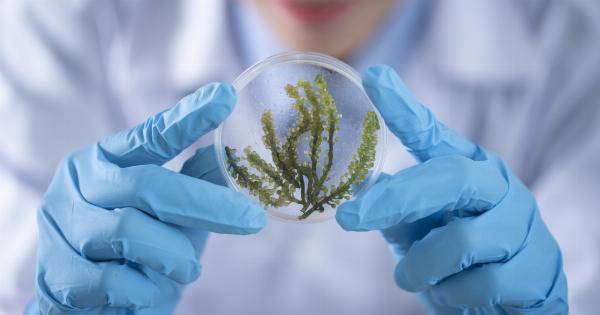Herpes, a widely prevalent viral infection, affects millions of people worldwide. While there are numerous remedies available, researchers have recently made a groundbreaking discovery related to a potential cure for this persistent virus.
Surprisingly, this breakthrough comes from an unexpected source – the depths of the deep sea. In this article, we will delve into the exciting findings of the scientists and explore the implications of this remarkable discovery.
The Prevalence and Challenges of Herpes
Herpes is a highly contagious viral infection caused by the herpes simplex virus (HSV). There are two main types of HSV: HSV-1, which primarily causes oral herpes, and HSV-2, responsible for genital herpes.
Once infected, the virus persists in the body for life, causing recurrent outbreaks characterized by painful blisters or sores.
The World Health Organization estimates that approximately 3.7 billion people under the age of 50 (around two-thirds of the global population) are infected with HSV-1.
Additionally, an estimated 417 million people aged 15-49 have HSV-2 infection worldwide. The prevalence of herpes and its impact on individuals’ physical and emotional well-being highlight the urgent need for effective treatments.
The Quest for a Cure: Exploring the Deep Sea
Seeking novel solutions, a team of researchers turned their attention to the largely unexplored depths of the deep sea.
With thousands of unique marine organisms yet to be discovered, the vast potential of this enigmatic habitat intrigued the scientists.
After years of extensive research and exploration, the team discovered a particularly promising species – a deep-sea sponge rich in bioactive compounds.
These compounds have exhibited strong antiviral properties in laboratory tests against various viruses, including herpes.
The Power of Deep-Sea Sponge Extracts
Upon closer examination, scientists identified two key compounds within the deep-sea sponge extracts that exhibit potent antiviral properties.
These compounds, let’s call them DS-1 and DS-2 for simplicity, demonstrated a remarkable ability to inhibit the replication of HSV in vitro.
DS-1 targets a specific viral protein responsible for the initiation of viral replication, hindering the virus’s ability to reproduce.
On the other hand, DS-2 inhibits the virus’s entry into healthy cells, preventing the infection from spreading further.
Promising Results from Preclinical Studies
In preclinical studies conducted on animal models, the antiviral efficacy of these deep-sea sponge extracts was further supported.
In a series of experiments, researchers observed a significant reduction in viral load and a decrease in the severity of herpetic lesions after treatment with DS-1 and DS-2.
The results were highly encouraging, demonstrating the potential of these compounds as a herpes treatment option.
Not only did the deep-sea sponge extracts effectively tackle the virus, but they also exhibited minimal toxicity and side effects, making them promising candidates for further development.
The Road to Human Trials
While the findings from preclinical studies are undoubtedly promising, more research is needed before the potential cure can be made available to the public.
The scientists plan to conduct further investigations to assess the safety and efficacy of these compounds in human trials.
The road to human trials involves rigorous testing, including formulation optimization, dosage determination, and comprehensive toxicity studies.
Additionally, the scientists need to obtain regulatory approvals and secure funding for these crucial next steps.
The Implications and Future Outlook
The discovery of powerful antiviral compounds in deep-sea sponge extracts opens up a world of possibilities for herpes treatment and potentially other viral infections.
Beyond simply providing relief for those currently suffering from herpes, this breakthrough has broader implications for antiviral drug development.
These naturally occurring compounds may serve as a blueprint for the design and synthesis of even more potent antiviral drugs.
By studying the mechanisms of action exhibited by DS-1 and DS-2, scientists hope to gain insights that can be applied to develop treatments for other persistent viral infections.
Furthermore, this discovery highlights the importance of exploring and preserving our planet’s diverse ecosystems.
The deep sea, with its rich biodiversity, continues to surprise us with valuable resources that can potentially revolutionize medicine.
Conclusion
With each new breakthrough, scientists grow closer to finding a definitive cure for herpes. The discovery of potent antiviral compounds within deep-sea sponge extracts marks a significant milestone in this ongoing quest.
While there is still much work to be done, the potential this breakthrough holds for millions of individuals worldwide cannot be understated. As research progresses and moves closer to human trials, hope continues to grow for an effective remedy against this persistent and widespread viral infection.




























